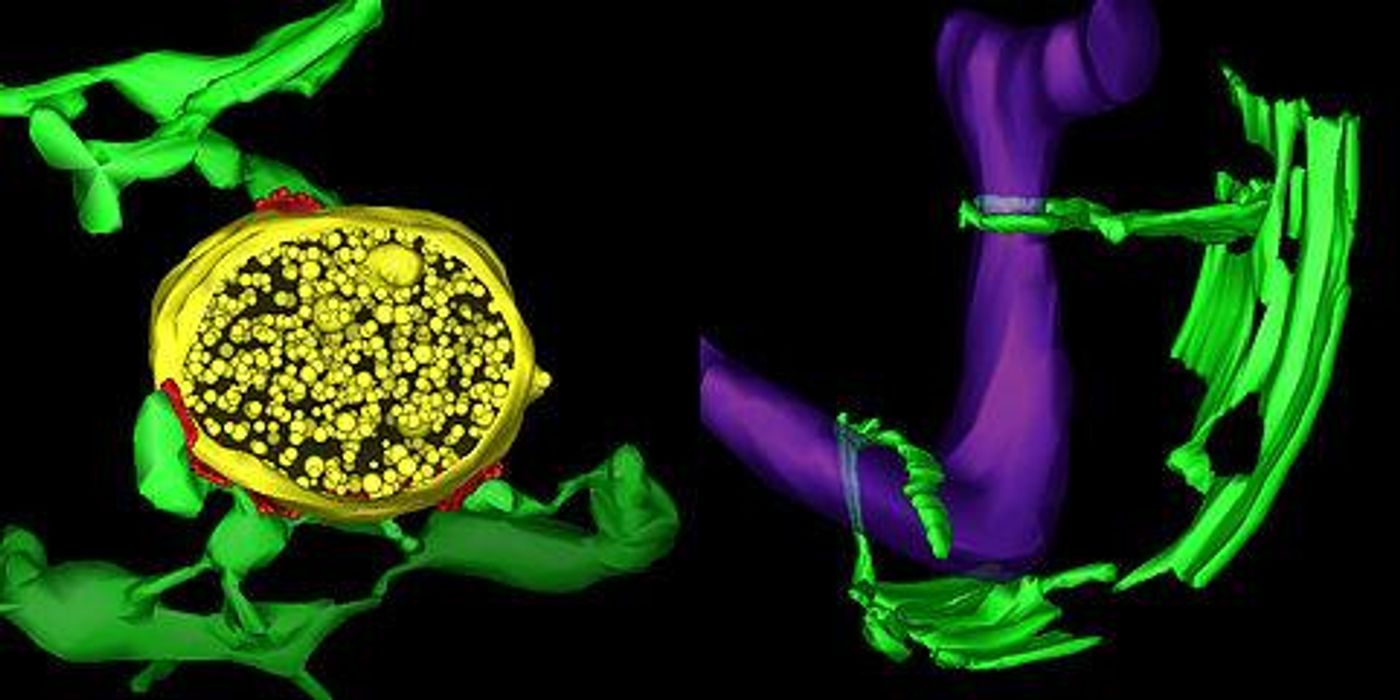Cells are divided into organelles that help accomplish all of the various tasks of a cell. One organelle, the mitochondria, is crucially important as the powerhouse of the cell, generating the necessary energy for functioning. New work from a University of Colorado Boulder laboratory that has previously done research in this area has revealed the final stages of mitochondrial replication and division.
Back in 2011, these investigators demonstrated how another organelle called the endoplasmic reticulum (ER) makes a web through the cytoplasm of a cell, which encircles other organelles including the mitochondria. Their research showed that when a branch of the ER touches individual mitochondria and starts constriction, a protein called dynamin-related protein, Drp1, is called to the site to constrict the mitochondria even more where the ER is touching it.
In
their new study, published in the journal Nature, the researchers report that once Drp1 starts squeezing the mitochondria, another protein comes to finish the job. That protein, Dynamin 2 or Dyn2, completes the process of fission, in which the organelle is split into two parts. The dynamin proteins are shaped like coils that surround the mitochondria and constrict like a person twisting a balloon.
These proteins work together; it seems that Drp1 puts the squeeze on the mitochondria to compact it, then Dyn2 moves when the constriction coil is small enough and finishes the process.
"Our findings change what everyone has believed about mitochondrial division," explained the first author of the study, postdoctoral fellow Jason Lee. "Now we know that it takes at least three different constriction steps in order to ultimately divide mitochondria."
Mitochondria contain their own DNA, which is passed down maternally. In any given cell, depending on the energy requirements of the cell type, there may be only a few mitochondria or there may be several thousand. When cells have additional energy needs, they can create more mitochondria.
Mitochondria, discussed in the video above, play many vital roles in the cell. Beyond being a source of energy, they have an influence on longevity; they are critical to the maintenance of blood sugar and fat. Mitochondrial dysfunction can have an impact on a wide variety of organ systems including the brain, liver, skeletal muscles, heart and respiratory systems.
A better understanding of how they replicate and divide puts us a little bit closer to understanding how pathological conditions like cancer cause changes and disorders inside of cells, Wu commented.
"The ability of our cells to efficiently convert nutrients into energy is rooted in the cell's ability to manage the shape, number and positioning of mitochondria through a balance of fusion and division," continued Lee. "This balance goes awry in cancer and neurodegeneration."
Sources:
AAAS/Eurekalert! via
University of Colorado Boulder,
Nature









